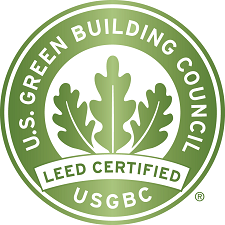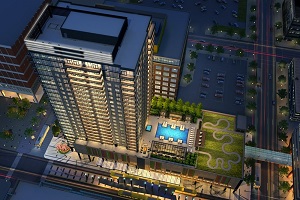 If you didn’t earn a degree in chemical engineering at a four-year university, don’t worry, you’re about to earn its equivalent on your building materials lot.
If you didn’t earn a degree in chemical engineering at a four-year university, don’t worry, you’re about to earn its equivalent on your building materials lot.
LEED Version 4 has already been released, and while your contractors can still use LEED Version 3 (LEED 2009) to certify projects until June 2015, those buying materials for the choicest projects will expect you to know which materials will meet Version 4 standards for reasons that may not be immediately apparent.
Apartment Buildings Everywhere
In twelve months we’ve seen a 7.5% increase in multifamily construction underway, making multi-family building construction the best sector relative to all other construction right now.
89% of these projects are apartment complexes with twenty or more units, which means they are buildings that don’t require much skilled finishing labor or high-end building materials. Apartment construction also has less of a long-term positive impact on the economy, with Moody’s Analytics estimating that a new apartment creates 1.8 jobs the ensuing year whereas a house creates 3.7, meaning these buildings may contribute less to the growth of short-term demand.
Still, considering where construction has been for the last eight years, these opportunities are more than welcome, and building apartments now may actually be an indication that home construction will accelerate in the not-too-distant future.
Right now there’s a huge demand for apartments from Millennials, and as anyone with young people in their family knows, that generation has had a particularly harsh welcome into adulthood. The “jobless recovery” coupled with excessive student loan debt has pressured many Millennials into the rental market. Some choose to rent, opting to live closer to town so they can walk, bike or take public transportation to work, and so they are closer to night life and cultural experiences.
But practically all of them prefer to live well within their means -- perhaps to save up for down payments for homes that may, in five or ten years, change the housing market completely.
Between now and then, the demand for apartments is expected to remain strong, and contractors have been applying for permits at a healthy clip: today there’s a 12.6% year over year gain in multifamily housing units authorized but not started.
That means your pipeline looks good – if you’re stocking the right materials.
Renters Will Pay for Green…
 Today’s renters are willing to pay for a green living space. No nationwide figures have been collected yet, but examples from specific urban areas abound. In Houston, for example, LEED-certified buildings earn about 35% higher rent-per-square-foot, have a 21% lower vacancy rate, and sell for 14% more.
Today’s renters are willing to pay for a green living space. No nationwide figures have been collected yet, but examples from specific urban areas abound. In Houston, for example, LEED-certified buildings earn about 35% higher rent-per-square-foot, have a 21% lower vacancy rate, and sell for 14% more.
Keep that in mind when thinking about those pending projects – and make sure every contractor who comes onto your lot knows right away that you understand the importance of LEED certification and that you know the difference between 2009 and Version 4.
…And Green Is Getting Really Green
The biggest difference between the two standards is the one that will earn you that honorary chemical engineering degree.
Version 4 looks at the composition of every material used and evaluates it for the impact its manufacture has upon the environment, as well as how it performs while in the building, as well as how safe it is for humans to live near it, as well as what happens after it is discarded.
Impressive, isn’t it? The standard measures the chemicals in everything against four benchmarks. Those at or below the worst one, Benchmark 1, should be strictly avoided. Few materials will qualify for the best one, Benchmark 4, but the LEED goal for the industry is to move everything there.
What’s a “Plasticizer?”
To give you an example of how deep this goes, take a look at DEHP plasticizer. A “plasticizer” makes things more pliable, and in construction you’ll find DEHP in wire more than anywhere else. It’s a Benchmark 2 chemical, which means it’s pretty bad. If humans are exposed to it for long periods of time it can damage the liver and reproductive organs.
Given the fact that very few people gnaw on the wires in their apartment’s walls, one would think that it wouldn’t matter. However, Version 4 looks at the chemical’s overall impact on the environment. Since DEHP accumulates in aquatic animals it poses a long-term toxic threat to aquatic environments. Therefore, LEED sets an industry goal to find a benign substitute.
This is the kind of expertise you want to develop, not only to impress your contractors but also to know what to stock. Many of the building projects in the pipeline will strive for LEED certification, and by the time they’re in progress LEED Version 4 will be in full effect, so now is the time for you to study up.
You might start with this free course from the source, and you might also look at your time management overall to make sure you’re on your game when speaking with a contractor. We can help you there with a free loaner Remote Deposit Capture (RDC) check scanner that lets you deposit checks – by far your contractor’s favorite form of payment – right at the point of sale. Not only does it eliminate the time wasted preparing checks and driving them to the bank, but in conjunction with check guarantee, it also eliminates the risk that a bad check will impact your cash flow.
Sharpen your game because the next eight years look a lot better than the last.



